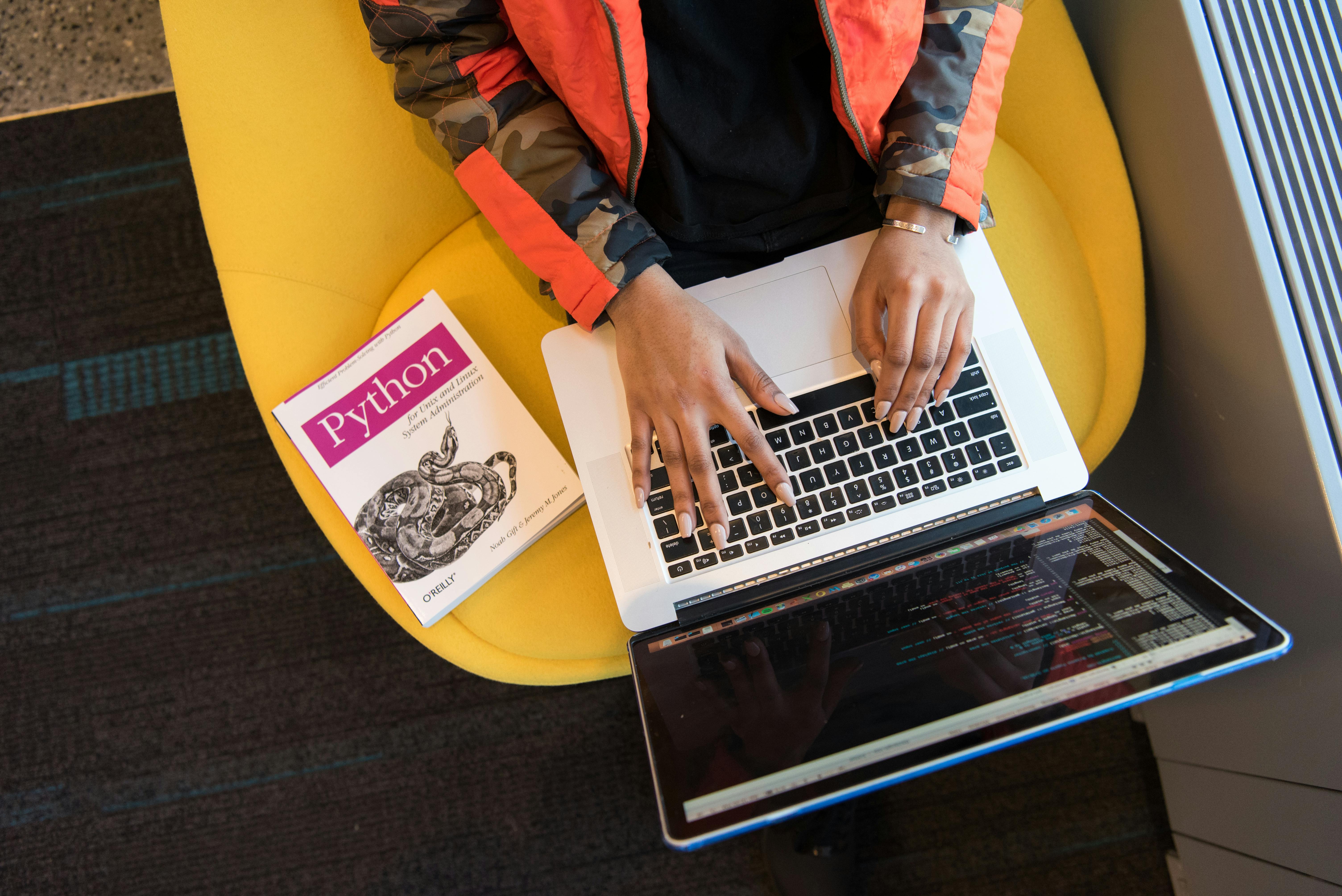Mastering the Art of Nonverbal Communication in Interviews
Mastering nonverbal cues can be a game-changer in job interviews, so we’ve gathered insights from top professionals, including managing directors and Human Resources managers. From matching your interviewer’s breathing rhythm to using subtle mirroring techniques, discover the top twelve nonverbal communication tips that can elevate your interview performance.
- Match Interviewer’s Breathing Rhythm
- Engage with Active Listening
- Perfect Your Handshake
- Convey Confidence with Presence
- Monitor and Control Nervous Tics
- Open Your Body Language
- Smile and Show Enthusiasm
- Maintain Good Posture
- Embrace Thoughtful Pauses
- Bring a Notepad to Balance Dynamics
- Maintain Great Eye Contact
- Use Subtle Mirroring Techniques
Match Interviewer’s Breathing Rhythm
These three tips may initially sound unusual, but thousands of interviewees can vouch for their effectiveness in calming nerves and making connections!
First, drop awkward, robotic mirroring and instead breathe your way to a positive connection by subtly observing the interviewer’s breathing. Then, try to match the fall and rise of their breath, and the magic happens after that! You will find yourself speaking at the same pace and timbre, and before you know it, you’re naturally mirroring.
Second, now that you’re focusing on your breath, you are concentrating on listening, as you can’t talk while breathing in! This means you are now “actively listening,” i.e., allowing you to go beyond just hearing words and instead absorbing all verbal and non-verbal information rather than thinking about what to say next.
Finally, ditch the ‘plastic grin’ and imagine how it feels when you smile with your eyes. You can’t fake a smile with ‘smiling eyes,’ which will relax your nerves. Consequently, you will come across as more confident, authentic, and positive.
Rob Scott, Managing Director, Aaron Wallis Sales Recruitment
Engage with Active Listening
Active listening is an essential non-verbal tool for navigating job interviews effectively. It involves more than just waiting for your turn to speak—it’s about fully engaging with what the interviewer is conveying. Maintain eye contact, nod to demonstrate understanding, and lean in slightly to show genuine interest.
By actively listening, you not only display respect for the interviewer’s viewpoint but also gain valuable insights into the company’s culture, expectations for the role, and potential challenges. This understanding allows you to tailor your responses to align with the organization’s values and needs.
Active listening helps you establish a strong connection with the interviewer, leaving a positive impression. Ultimately, this skill enhances your interview performance, enabling you to effectively communicate how you can contribute to the company’s success.
Rachel Weiner, Senior Technology Consultant, EC1 Partners
Perfect Your Handshake
While there are many nonverbal cues that should be employed by an interviewee during a job interview, I would suggest that this single nonverbal cue, at the very outset of the interview, will set the stage for the interview overall—and that nonverbal cue is a great handshake.
Regardless of gender or orientation, an excellent handshake is a tone-setter for an interview. Too firm, and it can be construed as aggressive; too weak, and it can be mistaken for passivity.
Getting a handshake just right actually takes practice. My pro tip here is to find a trusted friend and ask if you can shake their hand in preparation for the interview. Ask them to be fully forthcoming with how they feel about your handshake. Take any feedback and try to incorporate it into several practice handshakes until you nail it.
Remember, too, that a smile and a handshake go together like peanut butter and jelly.
Harry Lakin, Founder, Hire Capacity
Convey Confidence with Presence
Energy is felt in-person and through the screen. Having a relaxed yet present demeanor shows the potential employer that you are confident and approachable. It also sets the stage for them to imagine how collaborations with you would go.
I would also recommend giving a little smile or head nod if something that is said resonates with you. The interview process is both transactional, “Can this person do the job?” and relational, “How will this person navigate doing the job?” Non-verbal communication can be the best tool to show your ability to relate to your potential future colleagues.
Brittany Brazell, Human Resources Manager, Our Children’s Trust
Monitor and Control Nervous Tics
Understand what nervous tics you might have ahead of the interview so that you can keep an eye on them.
All of us have one, and while there really isn’t anything wrong with that, I do understand that job interviews are stressful and can send them into overdrive. I’ve had an interviewee who spent the entire meeting clicking their pen, seemingly completely unaware that they were doing it, which was both distracting and kind of annoying over the period of an hour.
You should do a bit of practice with a friend, or just ask them about what you tend to do when you’re nervous, if you aren’t aware of what your own habits might be, so that you know what to watch out for during the interview.
Dragos Badea, CEO, Yarooms
Open Your Body Language
A brilliant non-verbal tip to remember in a job interview is to open your body. When nervous and stressed, we close our body as a protective measure. What we often forget is that we mirror each other, so if your body is open, you will convey confidence, authority, and a sense of calm that will be felt by your interviewer.
Jude Bolton, Voice and Communication Coach, Speaking Works
Smile and Show Enthusiasm
Smiling indicates to the people interviewing you that you are pleased to be there and are at ease about answering questions. It also indicates enthusiasm about the job and presents your physical stature as one of being friendly and easygoing.
Heather Kerr, Human Resources Manager
Maintain Good Posture
Maintaining good posture during a job interview is crucial for making a positive impression. When the interviewer offers you a seat, sit upright but not too stiffly in your chair. This posture indicates that you are comfortable and feeling confident. Sitting up straight and leaning slightly forward can convey attentiveness and engagement, showing the interviewer that you are actively listening and interested in the conversation.
Additionally, good posture demonstrates professionalism and self-assurance, which are important qualities for the role you are interviewing for. It’s important to remember that your body language speaks volumes, and maintaining good posture throughout the interview can help you make a strong nonverbal impression.
Mike Podesto, Founder & CEO, Find My Profession
Embrace Thoughtful Pauses
Don’t be afraid of a pause! When I’m feeling nervous, I tend to talk quickly and feel the need to fill every silence with a word. I remind myself that taking a moment to think and taking a deep breath helps me gather my thoughts, slow down, and it lets the interviewer know I’m thoughtfully considering their question. The interviewer cares about your answer, not how fast you’re able to come up with it.
Liz Kelley, Content Marketing Manager, Focus Lab
Bring a Notepad to Balance Dynamics
Candidates sometimes treat a job interview like an interrogation. They sit empty-handed and nervously fidget while searching for answers to an endless barrage of pre-formed questions.
To transform the inquisition into a conversation, bring a notepad. The prop unconsciously balances the power dynamic. Having and writing notes gives the impression of two colleagues conversing rather than one interviewing the other. This instantly elevates your status.
And, practically speaking, a notepad affords you a crib sheet for key messages. Thoughtfully referring to it helps slow the pace of the exchange, allowing you time to form thoughtful answers and questions of your own.
Tim Toterhi, CHRO, Plotline Leadership
Maintain Great Eye Contact
When it comes to effective communication, one nonverbal cue that can significantly enhance your interactions is maintaining great eye contact. Eye contact serves as a powerful indicator of engagement and attentiveness, conveying to the other person or panel that you are actively listening and invested in the conversation.
Consider this scenario: Have you ever attempted to converse with someone wearing sunglasses, particularly if you’ve never met them before? The barrier created by the sunglasses can make it challenging to establish a genuine connection. Why is that? Because the eyes are often described as windows to the soul, reflecting emotions, intentions, and sincerity. Without the ability to see someone’s eyes, it becomes difficult to gauge their level of interest or sincerity in the interaction.
In a professional setting, such as a job interview, the importance of maintaining good eye contact cannot be overstated. It not only demonstrates your attentiveness but also conveys confidence and credibility. When you make eye contact with your interviewer, you are signaling that you are fully present and actively participating in the conversation. This can leave a lasting impression and help you build rapport with the interviewer.
Moreover, eye contact fosters a sense of connection and trust between individuals. When you meet someone’s gaze, you are establishing a direct line of communication that transcends words. It creates an opportunity for genuine interaction and allows for the exchange of unspoken signals and cues.
However, it’s essential to strike a balance when it comes to eye contact. Staring too intently can come across as aggressive or intimidating, while avoiding eye contact altogether may be perceived as disinterest or lack of confidence. Aim for natural, relaxed eye contact, maintaining a steady gaze while occasionally looking away to avoid appearing overly intense.
In conclusion, great eye contact is a simple yet powerful nonverbal communication tool that can significantly enhance your interactions and leave a positive impression on others. By making an effort to connect with your eyes, you can convey your engagement, sincerity, and confidence effectively.
TK Morgan, Founder and Visionary, Tuesday At 1030
Use Subtle Mirroring Techniques
A less obvious yet impactful nonverbal communication technique for job interviews is “mirroring.” This involves subtly matching the body language, gestures, and even the speaking pace of your interviewer.
When done with finesse, mirroring can create a sense of rapport and harmony without being overtly noticeable. It’s a way of nonverbally saying, “We are on the same page.” This technique can make the interviewer feel more comfortable and connected with you, often leading to a more positive interaction.
However, it’s crucial to be natural and not overdo it, as it should feel like a genuine reflection, not imitation. Mirroring, when used effectively, can subtly enhance the interviewer’s perception of you and strengthen the connection in the conversation. There are times when mirroring is not appropriate, like when your interviewer is nervous.
Danielle Dahl, Co-Founder, Resilient Stories






